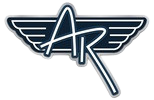There are many elements of classic car ownership or restoration that may involve some significant nuance, and a great example here is if you're looking to paint your classic car. Painting any vehicle is typically a bit tougher than it sounds, and this is doubly so with classic vehicles.
At Andersen Restoration Parts, we're happy to offer a wide range of parts for all your vehicle restoration needs, including polyurethane kits, suspension kits, idler arms and more. If you're looking to re-paint a classic car, whether on your own or with help from professionals, what are the basic steps that should be followed here? Let's have a look.
Initial Primer Application
If you're really looking for the best possible shine for your new paint job, the ideal approach is to start with some primer before you even begin the cleaning process. You should apply several coats of primer that will allow you to fully clean the vehicle.
Apply at least four coats here, and possibly more if you feel it's justified. From here, allow the primer to fully dry for at least a day - this ensures that the primer will adhere properly to the car's body and that it won't be wiped away during the cleaning process.
Simple Soap and Water Washing
Next up, once your primer has fully dried and set, you'll want to use a car-safe soap and water solution to give your classic vehicle a thorough wash. Make sure to get all the grime off and make sure that the car is as clean as possible before you start painting.
As you're doing this, be sure to use circular motions and make sure that you clean all the nooks and crannies of your car. This is especially important for classic cars, where dirt can build up in those hard-to-reach places.
Removing Bolted-On Parts
In most cases, any bolted-on parts that are part of your classic car will be removed and painted on their own. For instance, if your door handles are bolted on, you'll want to remove those and paint them separately. This ensures that not only will you get a better finish but it also makes the job much easier overall.
Other parts that might be bolted on include your headlights, emblems, and other similar components.
Wax and Grease Remover
The next step here is to go in and use a wax and grease remover on the vehicle. This is designed to remove any remaining residue or contaminants that might be left over from the washing process, as well as anything else that could interfere with your paint job.
Again, be sure to pay special attention to those nooks and crannies of your classic car and make sure that you use this product appropriately. Using too much or not enough wax and grease remover could lead to poor results, so be sure to follow the instructions carefully.
Sanding
Another vital step that must not be overlooked as you prepare your classic car for painting is sanding. This helps to smooth the surface and prepares it for paint. You'll want to use a medium-grit sandpaper here and make sure that you go over the entire surface of the car, paying special attention to any rough patches or small dents in the vehicle's body.
Once you're done sanding, be sure to wipe away any excess dust with a clean rag.
Second Layer of Primer
Once you've gone through all the basic steps above, the next step is to apply another layer of primer. This will help ensure that the car is fully prepped and ready for painting, and it also helps to protect your vehicle against rust and other potential damage.
Again, make sure to follow the instructions on the package carefully, as over-priming or under-priming could lead to poor results.
Painting
Finally, once the car is fully prepped and ready for painting, you can begin the actual process of painting it. Be sure to use a high-quality paint to ensure that your classic car looks as good as new.
You'll also want to follow all safety precautions here, including wearing protective clothing, goggles, and a mask. Taking the time to do this right will ensure that your classic car looks amazing when you're done. Once you've painted the vehicle and allowed it to dry, you can begin putting on any bolted-on parts that were removed during the process. Now your classic car is ready to be admired!
In some cases, you might take many of the preparation steps we've gone over here on your own, but then rely on professionals to help with the actual painting process. This is a great way to ensure that your classic car looks perfect, as professional painters have years of experience and know exactly what they're doing.
For more on painting a classic car, or to learn about any of our restoration parts or services, speak to our team at Andersen Restoration Parts today.

